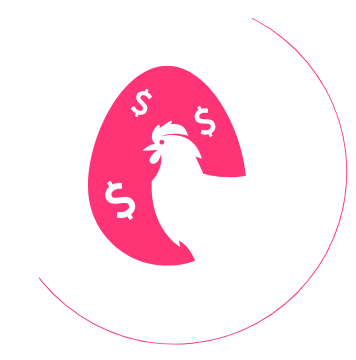Grab one of these 7 legit part-time work-from-home jobs and start earning immediately. Pick your favorite path—writing, copywriting, affiliate marketing, or customer service—and dive in today.
I’ve tried many part-time work-from-home jobs. Some were gold, some were absolute garbage. I know how overwhelming it feels when you’re juggling bills, family, and a never-ending schedule. And that’s not even counting how much money you burn at the grocery store. Then another bill arrives in the mailbox or inbox, and more money is spent.
It’s wild how much we spend. The average American household spent $77,280 in 2023. And that… was 2023! That’s a lot of money flying out the door. Keeping costs low can be frustrating unless you have a few money-saving hacks or a way to earn some extra cash.
Ready to flip the script? You can earn cash on your own terms, starting right here. These aren’t just ideas. They’re the real deal. These are ways I’ve made money. I’ve also included a few ways I know other real women have made money working online from home, part-time or full-time. There’s a lot to unpack here. So, let’s break it all down.
Disclosure: I’m not a financial expert or a health professional. I don’t have a degree in finance, math, economics, or medicine. I’m just a gal who’s been there before. If you need professional advice, I recommend consulting an expert.
1. Freelance Writing from Home
I’ve been freelancing since 2014. In fact, this was one of my first side hustles. Back then, I worked on freelance platforms for low rates (because, at the beginning, I didn’t know any better). However, there are many better platforms available. I know… I found them. I’ve linked my favorites below. I’ve tested almost every popular platform out there:
I also pitched private clients and landed agency gigs, which are a bit harder to land than finding work on the platforms, but these gigs can also be more rewarding. So, don’t be afraid to approach brands and publications yourself. The platforms are one option, but they aren’t the only option.
Freelance writing is one of the most flexible and legitimate part-time work-from-home jobs out there. You set the schedule. You choose the gigs, and you decide if the pay is worth your time. That said, it’s also highly competitive, so start small.
Quick Start Guide
- Pick a niche you actually like.
- Write 1–2 solid samples (Medium works).
- Share them with potential clients.
- Post your services on freelance platforms.
- Pitch private clients directly.

A pink typewriter with pink roses and a pink mug of coffee.
You’ll also need to learn the basics of SEO, because if you’re writing for a client who publishes online, they’ll expect you to know it. You can learn SEO for free on Hubspot Academy’s website. They have some great tutorials.
Freelance writing is a scrappy side hustle that helped me build the skills and experience that led to my current full-time role as a staff writer at a marketing agency. It also gave me the confidence to run this blog.
If you’ve got a voice, an opinion, and the ability to write a clear sentence, you can do this.

2. Start a Blog That Makes Money
I launched Frugal Hen in October 2024. It’s monetized and ready to roll, but earning takes time. Blogging is more about providing real, long-term value to your readers. It’s about being authentic and building trust.
That said, it takes an average of 22 months, and sometimes longer, to start earning money from a blog. Some bloggers can do it in 6 months, but this is not the norm.
Blogging isn’t a quick win. It’s a long game. You need to understand your audience, learn SEO and content marketing, and consistently show up, week after week. And today, you’ll also need to know how to write to rank in AI search.
Here’s how I’m approaching blogging:
- Writing helpful posts that solve real problems
- Focusing on frugal living and smart money habits with every topic
- Drive traffic using SEO, Pinterest, and social media
- Monetizing with relevant affiliate links and digital products that offer real benefits and solutions
It’s a slow build, yes. But I’m in it for the long haul. If you’re patient and persistent, blogging can pay off. But don’t expect overnight success. And don’t expect to earn your first $10K in your first six months. Be realistic and celebrate your unique journey with each step.
Here are a few beginner-friendly affiliate programs I recommend (some require a minimum following):
Each affiliate program has its own set of rules to follow, so ensure you follow them to avoid losing your affiliate account. Also, the Federal Trade Commission regulates ads, which are what promotional posts (on social media or blogs) are. These must be clearly marked… at all times.
3. Write and Sell eBooks Online
I’ve ghostwritten and sold eBooks for private and commercial clients. I also had a few fiction gigs. Those were fun projects.
The key to remember is that writing e-books is also not a get-rich-quick scheme. However, you can create a steady income stream by writing high-quality content that people actually want to read, if you conduct thorough research and effectively promote your eBook once it’s published.
According to ZonGuru, self-published authors on Amazon Kindle Direct Publishing (KDP) can earn anywhere from $150 to over $20,000 per month, depending on the quality of their book, marketing efforts, and audience reach.
But as a frugal blogger, I’ll be honest with ya. If you’re doing your own marketing, your effort looks a little something like this: Time spent writing = 10-20%, Time spent marketing = 80-90%.
You will do a wild amount of marketing, and there’s no way around that unless you have the funds to pay a professional to do it for you. Automation helps… a lot! Write and schedule your posts in advance to save time.
Here’s how to start:
- Choose a topic
- Write for quality
- Design an eye-catching cover
- Format your eBook professionally
- Publish on platforms like Amazon KDP, Gumroad, or your website
- Promote through social media, email newsletters, and collaborations
Success won’t happen overnight. It takes time to build an audience and see consistent earnings. However, with focus and follow-through, selling eBooks can become a rewarding source of income.

4. Get Paid to Write Articles
I’ve written paid guest posts for a wide range of clients and industries. This is often referred to as content marketing, and I’ve done it extensively. If you can write a solid post that aligns with a brand’s voice and audience, you can earn real money.
Pay varies. I’ve been paid rates from $100 per post (on the very low end) to over $900 per post. The specific rate depends on many factors:
- The client
- Their budget
- Your expertise and skill level
- Post length and complexity
- Industry
- Whether or not you’re interviewing experts or crunching numbers
This is one of those part-time work-from-home jobs that rewards skill and persistence. If you’re good at writing and even better at pitching, it’s worth pursuing. Oh, and the harder something is to write, usually (emphasis on usually), the more it pays.
Start by creating samples in your intended niche. I don’t recommend writing about anything and everything. Most businesses are looking for niche-specific writers. So, pick an industry.
Don’t go too narrow. You want enough wiggle room to write about other things in the same industry. But don’t go too broad, either. Then, research brands that publish content in the niche you write in.
Don’t wait for ‘calls for pitches.’ Reach out to brands and publications that interest you.
Do your homework first. Understand the brand or publication:
- What are they about?
- What type of content do they publish?
- What have they already covered?
- Who is their audience?
- What can you offer that aligns with all of this?
Many websites have guidelines (also called writer’s guidelines, submission guidelines, or content guidelines) published on their website. Here’s an example of a ‘submissions guidelines‘ page from Down East magazine. I chose Down East just because I happen to love their website.

You can also look for websites that outline opportunities. Perhaps you’ll find one that aligns with your skills, experience, and interests. WebCing put out a fantastic one, a Mack Daddy list of over 175 paid guest posting sites. So, you could start there as well. BuzzStream also has a great list with over a hundred places to pitch an article. Read each site’s submission guidelines.
Like I said, do your homework. Then write your best pitch. I usually write a pitch in about three short paragraphs. Editors are very busy people with extremely full inboxes. So, be mindful of their time. Here’s how my pitch generally flows:
- Paragraph 1: A solid hook or article introduction
- Paragraph 2: The proposal: what you’re article is about and how it fits the brand or publication
- Paragraph 3: Why you’re the best writer for this piece, and the ask (Can I write this for you?)
Need ideas for creating a pitch? Don’t let AI write it for you. If you’re pitching to a magazine, that AI pitch will land in the slush pile. Here’s how to write a solid article pitch for yourself. I promise, it’s not hard, but it does require a little research.
5. Offer Copywriting Services Online
I’ve done plenty of copywriting. Website copy, landing pages, social captions, newsletters — you name it. And copywriting isn’t just writing. It’s persuasion. It’s sales. And it’s clarity and speed.
You’re not writing to inform. You’re writing to convert. Sometimes, you’ve got a few sentences. Other times, you’ve got just four words. Each one must pull its weight to maximize the impact and make its point.
Copywriting is a skill. Yes, you can learn it. But you won’t master it in a week or even a few months. You’re not going to land a six-figure retainer from your first cold pitch. It takes time to build the chops, master the voice, and get the results. And there are different types of copywriting.
That said, if you’ve got some killer writing and SEO skills, you can learn commercial writing. I follow a group called Copy That. They offer some great information for free, and a premium subscription is available for those who want more. You’ll find their videos on YouTube. However, I’m embedding one of them below for easy reference.
Begin with a few projects and build upon them. That’s how I did it. I started with content marketing, though. And while the two skills differ, they sometimes overlap.
Start small.
Master one thing at a time and build from there because there’s a lot of competition out there. If you’re going to land gigs, you need to be better than the competition and far better than the AI. You won’t learn all the basics in one go. However, master one skill at a time and build upon it as you go.
Copywriting pays well when done right. However, it requires strategy, practice, and ongoing learning. If you’re serious, it can become one of the most lucrative part-time work-from-home jobs out there.

6. Earn with Affiliate Marketing
I dabble in affiliate marketing. It’s a flexible way to earn, but like other things, it requires strategy and tremendous patience.
Affiliate marketers can earn anywhere from $0 to over $100,000 per month, depending on their experience, niche, and consistency. Yes… really. But before jumping on the affiliate marketing bandwagon, there are a few things you should know.
To succeed, you need to:
- Choose a niche that aligns with your interests and has strong market demand
- Create high-value content with blogs, social media, or email newsletters
- Build and engage your audience consistently
- Promote products or services that actually help your audience, not just every shiny object
You’ll need to learn what to do and how to do affiliate marketing right. You can start with the same beginner-friendly affiliate programs I mentioned earlier.
Ahrefs, a popular SEO tool and brand, has a fantastic free YouTube video on affiliate marketing. It’s long, so plan accordingly and grab some popcorn. Unless you’re planning on watching it in sections, you’ll be here for a couple of hours, but it’s worth it.
This is also not a get-rich-quick plan; it’s a business you build from the ground up. It takes time. Patience. Planning. You need to understand your topic, your audience, the search engines, SEO, and so much more. You also need to build an engaged following.
7. Find Remote Customer Service Jobs
You know what’s underrated? Getting paid to sit at home in your stretchy pants and answer calls. That’s the magic of remote customer service. It’s not always glamorous, but it is money in the bank. Sometimes, a decent amount of it. Customer service was my first experience working remotely.
I’ve worked full-time and part-time gigs like this… for years. One had me answering phones for a large, national insurance company. Another was about a popular cell phone.
Honestly, the key is finding the right company so you’re not stuck apologizing for someone else’s shipping delays all day. …Or dealing with rude customers who really don’t care what the rules are or that you should’ve logged off the phone at midnight when your shift ended.
I found my former remote customer service jobs through Indeed and Rat Race Rebellion. Yep, that old-school job board and the one that sounds like a pirate-themed side hustle.
Actually, I love that latter one. The name. It’s all about the name. Both delivered, though. You’ll need good internet, a noise-canceling headset, a quiet-ish background, and a voice that doesn’t sound like you’re about to snap.
Work-From-Home FAQs
Work-from-home jobs sound great, but they raise many questions. Not sure where to start or what’s legit? These quick answers can help.
Turn Your Writing or Time Into Income
You don’t need a journalism degree or a fancy resume to make money working from home. You just need a plan, a little grit, and commitment to show up, even when it’s slow.
Each of these part-time work-from-home jobs can help you earn extra income, sharpen your skills, and build a career you actually enjoy. Don’t get distracted by the noise or get stuck on the scroll. Pick one path. Follow it. Master it. Then level up once you’re ready.
No, it won’t be easy. But you’ve got this. I believe in you. And yes, I promise that it will be worth it in the end.
So, what are you waiting for? Let’s turn that hustle into real income.
Image Credit: © dmytrogilitukha via Canva.com | © Floral Deco via Canva.com | © Markus Winkler from Pexels via Canva.com | © Michail_Petrov-96 via Canva.com | © Melike B from Pexels via Canva.com
What to Read Next (Because You’re On a Roll)
- 7 Best Ways to Make Money Online
- 8 Easy Side Hustles That Slash College Costs
- How to Land Freelance Writing Jobs for Beginners





